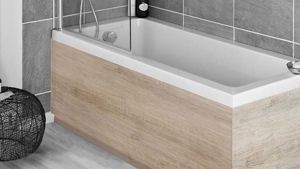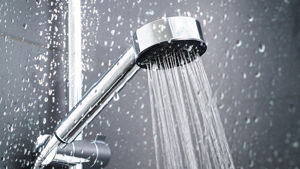Keeping your heating systems running smoothly throughout the year will reduce your bills and help to keep your home cosy. Bleeding your radiator is one of the best ways to keep your heating in tip top condition, but a surprising number of people don’t even know where to start, unnecessarily spending money on a plumber to do it for them.
Well, we’re here to tell you that anyone can bleed a radiator, and it’s one of the best things you can do for your heating. Bleeding your radiator may sound terrifying (and let’s face it, a little bit gory), but it’s a very simple process that you can master in just a few minutes.
Here’s where to begin.
Why Bleed a Radiator?
To understand why you need to bleed your radiators, you first need to know how radiators actually work. Radiators work by running hot water through them, which is kept moving by an electric pump. However, internal build ups and air pockets can build up, eventually affecting the efficiency of this system.
Trapped air inside your radiator will cause cold spots. This means you get less heat for the same amount of money. Bleeding your radiator will rid them of these air pockets and improve the performance of your radiator, resulting in cheaper energy bills and a warmer home. But not only will uneven heating cost you more money, it can also contribute to damp and mould in your home.
How Often do I need to Bleed my Radiators?
Bleeding a radiator too often is, quite frankly, a waste of time. Many people in fact never bleed their radiators, and never have any trouble - although this is rare. We recommend bleeding it once a year - preferably in autumn when it’s time to get the radiators going again ready for the colder months.

You will need:
- A radiator key or flat screwdriver
- 2 rags
- A container for collecting water
1 - Heating On
To check which radiators need to be bled, your radiator will need to be hot. Turn your heating on full and wait for the radiators to heat up.
You can then check to see if your radiator needs to be bled by feeling to see if there are any cold patches across it. These are pockets of trapped air or gas which will need to be released to get the heat across your radiator even again. Please be careful when touching your radiator with the heating on full!
2 - Heating Off
Turn off your heating once you have determined which radiators require bleeding. Failing to do this could result in a flood inside your home which isn’t quite the efficient heating system we had in mind!
3 - Bleed
Take your radiator key or screwdriver and place it over the bleed screw, covering it with a rag to protect your hands from escaping hot air. Turn the key slowly anti-clockwise for half a turn, you will hear a hissing sound as the air releases. Hold the second rag and container below to catch any escaping water.
When the air stops hissing, tighten the screw again ensuring you don’t overtighten. Try to do this before water starts to flood out your radiator, although simply scoop up any escaping drips with the container.
4 - Heating On (Again)
Turn the heating back on and check that your radiator is heating evenly and that the valve isn’t leaking.
Other Ways to Improve Radiator Performance
Bleeding a radiator is one of the easiest and cheapest ways to improve your central heating performance, but it’s not the only way. With over 50% of our fuel bills being spent on heating and hot water, knowing some neat tricks to help improve your heating efficiency is essential when it comes to getting the most bang for your buck!
Insulation Foil
Insulation foil is placed behind your radiator and reflects the heat from the rear of the radiator back into the room. They can be found at practically any hardware stores and will improve the efficiency of your heating system for very little cost and effort; you can even install it yourself!
A Radiator Booster
A radiator booster is slightly more expensive but still a great way to improve your heat output. This is a fan unit that sits on top of your radiator and helps warm air to circulate around the room. These use electricity to run but will save money long-term.
Good Insulation
Check for draughts around windows and doors, and draught-proof anywhere that heat is easily lost. Insulate thinner walled areas of your home. Loft insulation could save up to £250 a year.
Use your Boiler Regularly
Try to use your boiler for just a short time every day in the warmer months, even just 30 minutes. This keeps the water pumping around the system and helps you prevent costly build ups that occur after long periods of inactivity. This also means you can keep an eye out for trouble before the colder months hit.
Finally, have your boiler regularly serviced to keep it in tip top condition. Consider an insulation jacket to improve its efficiency, or a thermostat is another option. Setting it to a max temperature of 60 degrees could save you around £30 a year.
Knowing how to bleed a radiator is a skill that, once mastered, can save you huge amounts of time and money. With so much of our hard-earned money being spent on heating bills, it’s essential that we make our heating systems as efficient as possible. Spending time looking into the possible options for insulation will pay off in the long run.
As always, the team at Tap Warehouse are available if you have any further questions. Please don’t hesitate to get in touch








